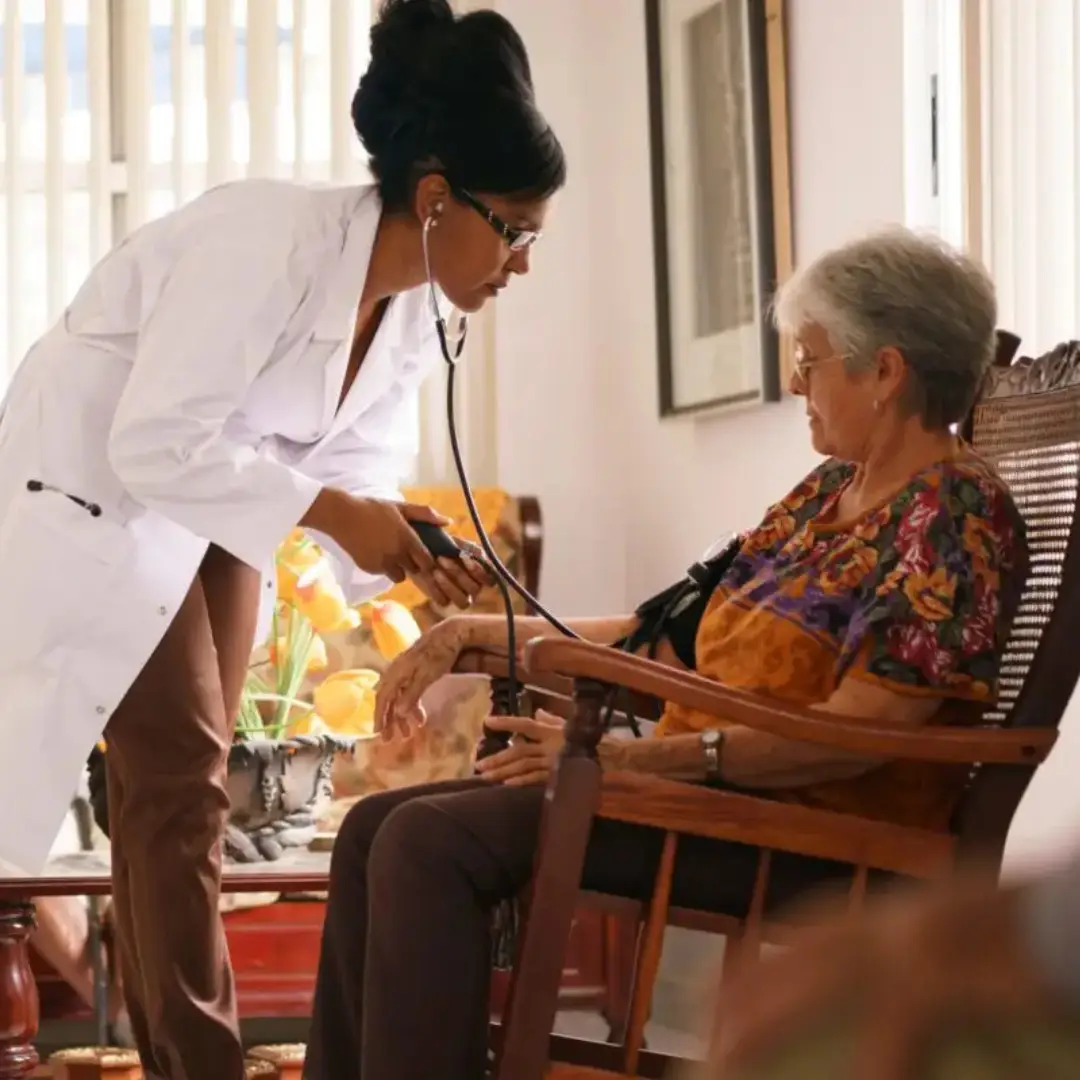In the operating theatre, devices such as plastic retractors – which are used to hold surgical cuts open – were used once per patient and then thrown away at the end of the procedure to be disposed of as medical waste. In her hospital in the Philippines, the same device would be painstakingly sterilised and reused until it was worn out and beyond repair.
Seeing these life-saving items being thrown away when they were so sought-after in the Philippines, Teves decided to do something about it. “When I saw the waste, I thought to save whatever single-use equipment I could get my hands on, so I could recycle them and bring them back,” she says. It was a decision that would have ruffled some feathers at the Singapore hospital if it wasn’t carried out with discretion and the help of friendly staff. In the end she managed to fill a large suitcase with “single use” plastic surgical devices that would otherwise have gone to waste.
Addressing the environmental impact of healthcare, from plastics to fossil fuel reliance, can quickly become a charged debate. After all, when it comes to saving lives, the patient in front of a doctor is always the first concern. “It’s very good in theory to talk about healthcare and its environmental footprint, which is not insignificant,” says Hong Kong-based cardiologist Ryan Ko. “But it’s another thing altogether when you’re on the front lines of healthcare. As doctors, we are required to make patients’ immediate needs and requirements a priority, and that needs to come first.”
Fossil fuel combustion is a major contributor to air pollution-related deaths, which kill more than four million people around the world every year – Gary Cohen
Even Teves agrees – her motivation in saving devices was to provide equipment for patients in the Philippines. “Addressing sustainability is not really on our priority list; everything we do is about helping our patients,” she says.
Others point out that in the broader sense, sustainability is also about helping patients – or rather, preventing people having to go to hospital in the first place.
Take the healthcare industry’s carbon emissions – if healthcare were a country, it would be the fifth-largest emitter of greenhouse gases on the planet, according to the non-profit organisation Health Care Without Harm. That’s a carbon footprint the same as the emissions of 514 coal-fired power plants, equivalent to 4.4% of global net emissions. More than half of that was a result of energy use: electricity, gas, steam, air conditioning and operational emissions.
“Fossil fuel combustion is a major contributor to air pollution-related deaths, which kill more than four million people around the world every year. More than tuberculosis, more than malaria, and more than Aids combined,” says Gary Cohen, president and co-founder of Health Care Without Harm.
Cost of waste
One of the problems is those on the frontline often see providing necessary healthcare and being environmentally friendly as an either/or choice. “It’s difficult to think about sustainability when we have to weigh that up against the safety of a patient,” says Ko.
In people’s minds now, both single-use protective equipment and single-use medical equipment are understood as safer. But that is not necessarily true – Tony Capon
But what if doctors worked in a healthcare system where they didn’t have to make a choice between the two?
Sometimes the shift is as simple as challenging assumptions. Take single-use plastics; healthcare workers on the front line emphasise that there is a legitimate need for single-use plastics, primarily to prevent infectious diseases from taking hold and spreading – and Covid-19 is a perfect example of this need. While no one would argue that safely disposing of hazardous used PPE is essential when it comes to infectious diseases like Covid-19, only 15% of healthcare waste is actually classed as “hazardous” – which covers waste that could be a source of infection, or is radioactive or toxic.
The other 85% of medical waste is not much different from the waste we generate at home, or at work. This waste might cover used food containers, packaging materials or gloves worn to inspect a non-infectious patient. It’s this non-hazardous 85% where the reductions could come.
“In people’s minds now, both single-use protective equipment and single-use medical equipment are understood as safer. But that is not necessarily true,” says Tony Capon, director of the Monash Sustainable Development Institute. “When I was beginning my medical career, it was standard practice for things to be cleaned and autoclaved. Medical equipment was routinely cleaned up, sterilised and reused.”
Coronavirus could well become a catalyst, because people may realise that by degrading our environment, we could find that we are getting more and more of these types of diseases – Sonia Roschnik
Then there is the question of cost. Single-use disposables are perceived to cost less upfront, than supplies which need to be maintained carefully to prevent infection and early wear and tear. But in the longer term, there is a high cost to constantly replacing devices. Neurosurgeons at one Canadian hospital, for example, cut their costs by CA$750,000 ($570,000/£430,000) by reducing use of disposables by 30%.
Plastic gloves are a good example. Sonia Roschnik, the former director of the Sustainable Development Unit for England’s National Health Service, recalls a time when nurses at London’s Great Ormond Street hospital realised that healthcare professionals were choosing to use non-surgical gloves instead of washing their hands, when performing tasks such as moving beds or bathing babies. When nurses started to remind staff that the gloves weren’t intended for these purposes, glove usage went down, says Roschnik. The hospital was able to cut its use of plastic gloves, saving 21 tonnes of plastic and £90,000 ($120,000) as a result.
Roschnik, who is now international climate policy director at Health Care Without Harm, adds that the industry “could also go some way into cleaning up if it reutilises certain items, and if there is a concerted effort to segregate waste more efficiently, because not all of the rubbish needs to go into a high-infectious work stream”.
There is certainly a way to go. In 2018, a survey conducted across four Mayo Clinic locations across the United States found that single-use plastics made up at least 20% of medical waste generated in US hospitals; 57% of those surveyed didn’t know which items in operating theatres could be recycled, 39% said they either sometimes or never recycled, and that 48% had “a lack of knowledge” about recycling.
The widespread lack of an efficient medical recycling system represents a part of the bigger problem with the industry as a whole. In a commentary on healthcare’s role in the global climate crisis, Yale School of Medicine associate professor of anaesthesiology Jodi Sherman called environmental sustainability an “unappreciated dimension of health quality care”. She and her co-authors also pointed out that traditional assessments in the successes or failures in the healthcare system as a whole have yet to factor in the cost of pollution both up and downstream of the industry’s supply chain, from resource extraction to disposal management.
With medical waste currently more visible than ever, researchers are calling for healthcare’s waste and environmental footprint to be brought up the agenda. “Coronavirus could well become a catalyst, because people may realise that by degrading our environment, we could find that we are getting more and more of these types of diseases,” says Roschnik. “Do we as a people want to live this way? Or do we say: if we want to be healthy, our planet needs to be healthy – and it’s incumbent on all of us to do something about it.”
Climate health
Cutting greenhouse gas emissions is perhaps the most direct way that healthcare facilities can align pro-environmental behaviour and human health benefits. Aside from the disease and deaths caused worldwide by increased extreme weather, heatwaves and sea level rise, cutting emissions often comes with cost savings that can be channelled back into healthcare.
In the US, Boston Medical Center, for example, is using solar energy to meet its energy needs by buying its electricity from solar farms, saving $25m (£19m) as a result. The Cleveland Clinic, which invested in 15 internationally certified energy-efficient buildings, saw its energy consumption decrease by 19% as a result, which translates into $50m in (£38m) savings. Energy efficiency measures also slashed consumption at Canada’s McGill University Health Centre, which resulted in savings of up to C$2m ($1.5m; £1.1m) a year, and the hospital’s electronic waste recycling program processed 52 tonnes of electronic devices over the span of a decade.
Other hospitals are looking into their food supply chain as a way of making their operations more carbon friendly. The University of Washington Medical Center has begun using a more sustainable, efficient food procurement system to improve its carbon footprint, by working with a local farmers union to provide locally grown, organic food to both patients and paying customers. The University of California, San Diego Health eliminates food waste either through composting or donating uneaten meals; their goal is to cut their food-related emissions by 25% by 2030.
Besides carbon dioxide, healthcare relies on several more potent greenhouse gases; operating theatres rely on the anaesthetic gases desflurane, sevoflurane and nitrous oxide, which are greenhouse gases. Only 5% of these gases actually enter a patient’s system during surgery – the rest is vented out as medical waste. These halogenated gases have the global warming potential up to 2,000 times greater than carbon dioxide. Researchers have suggested reducing emissions by using gas-capture technology that uses canisters to collect unused anaesthetics.
“Hospital managements may have a lot of things that they have to put in place to make sustainability ‘a thing’, but in reality every healthcare professional should be thinking about it in the way you use products,” says Roschnik. “How you do clinical practice in a sustainable way is going to require every healthcare professional to think about it.”
As Teves’ efforts in Singapore to save reusable medical devices from the incinerator show, sometimes providing the best care for patients and sustainability naturally align. And where they don’t, it’s a question of how to redesign the healthcare system so there isn’t a choice between saving lives and the environment.
“What health means now is to address those factors that are making people sick in the first place, and not just treating sick people,” says Health Care Without Harm’s Cohen. “[We need to get] healthcare to address their climate footprint, to be the anchors of resilience for the communities that they serve, and to become advocates for environmental health and justice.”
Given the health risks of air pollution, climate change and plastic waste, cleaning up healthcare could in fact turn out to be an opportunity to save many more lives.











